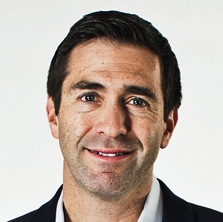Connect with execs from The New York Times, TIME, Dotdash Meredith and many more

Consumers are everywhere in media nowadays. It’s time advertisers catch up.
The numbers make it clear that the modern media consumer, aka the digital native, is skipping across media platforms all the time. A recent study conducted by Time Inc. and Innerscope Research showed that digital natives change their media platforms 27 times per hour, while “digital immigrants” (those weaned on traditional media) switch media platforms 17 times per hour.
It is important advertisers recognize that consumers are using their PCs, phones, tablets, laptops, e-readers, and televisions, often simultaneously, to consume media. Instead of isolating new media from display, TV, radio or print, it’s more beneficial to integrate them. It’s no longer about digital media or standard media; it’s all of the above.
A recent Nielsen study found that consumers simultaneously use smartphones, tablets and e-readers, while watching TV. About 40 percent of consumers indicated that they use smartphones and tablets on a daily basis, while viewing TV. Conversely, fewer than 14 percent of consumers indicated “never” using smartphones and tablets with TV. Advertisers should surround consumers with ads as they migrate from one venue to the next. For example, an advertiser can run a standard TV commercial with related mobile and tablet banners and target relevant social conversations to create seamless branding experiences across multiple platforms.
A natural gas advertiser wanted to generate awareness about the dangers of downed power lines. Rather than focusing on one medium such as TV, the advertiser took into consideration the fact that people may encounter downed power lines at different locations and times, versus only at home. Thus, the campaign took a “video everywhere” strategy, which expanded video reach across desktops, mobile and tablets. Additionally, on-the-go consumers were targeted at gas pumps through digital out-of-home.
This example further validates the need for advertisers to create holistic campaigns that grab the attention of frequently moving consumers, while also realizing the window of opportunity to reach them is shrinking and the responsibility to maximize it must lie somewhere. The responsibility will equally lie with creative and planning teams to ensure that the small amount of time to capture consumers’ attention is as well designed and as well placed as possible.
If consumers are continually taking in different media, shouldn’t advertisers be targeting in a similar fashion?
Ben Pashman is vp of business development at Centro, a media logistics company.
More in Marketing

In Graphic Detail: Inside the state of the creator economy industrial complex
The creator economy might have started out as an alternative to traditional media, but is becoming more and more like it as it professionalizes.

Shopify has quietly set boundaries for ‘buy-for-me’ AI bots on merchant sites
The change comes at a time when major retailers like Amazon and Walmart are leaning into agentic AI.

WTF is ‘Google Zero’?
The era of “Google Zero” — industry shorthand for a world where Google keeps users inside its own walls — is here.





